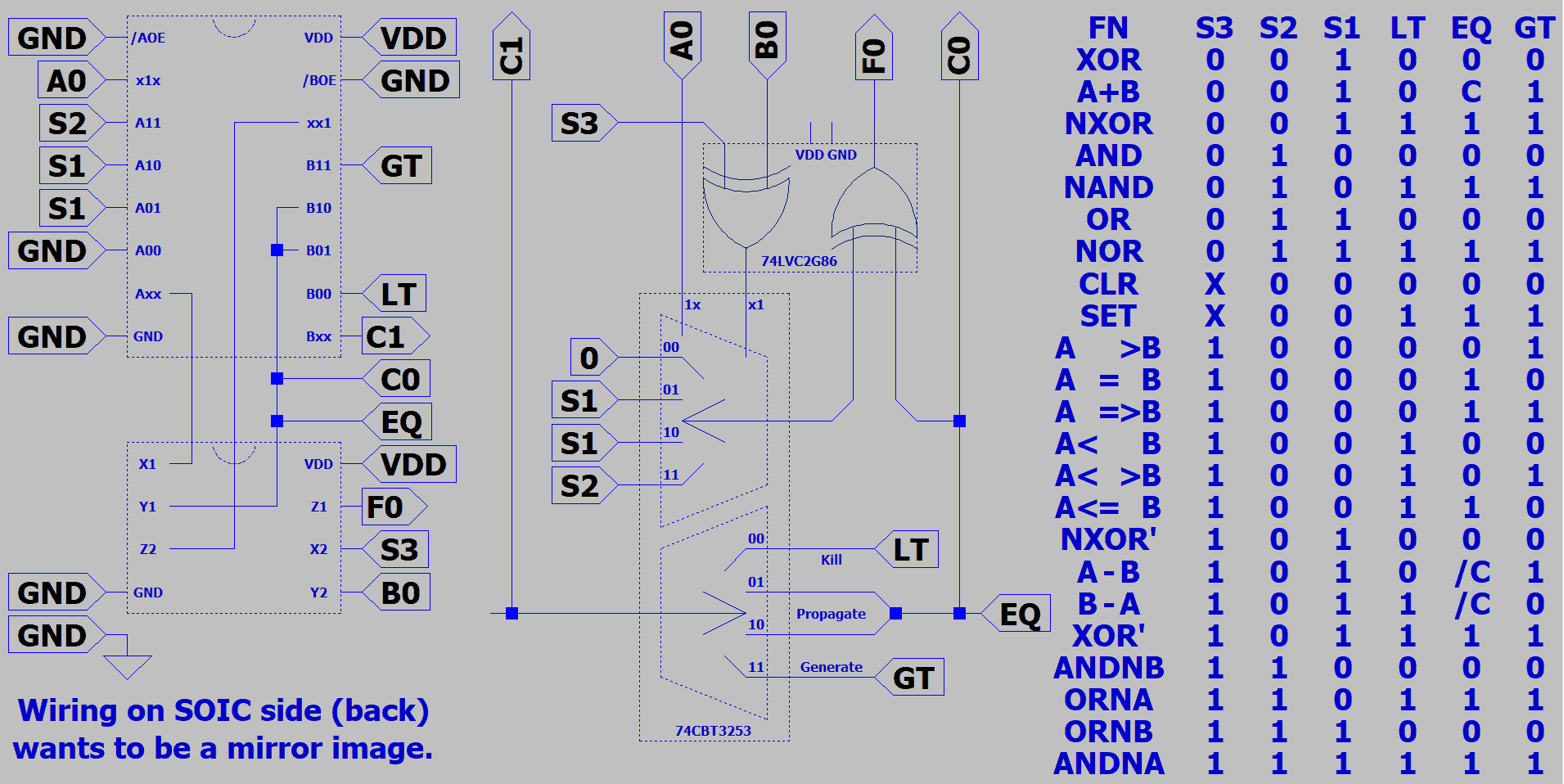Back to basics for a moment. Don't forget difference across coils can also perform XOR.

Further evolution of the same...

Work in progress. Trying to hide inactivated side loads behind a single pass transistor. Also thickening the critical path of propagation. Parallel RC time constants won't make that path any faster, but better tolerate fanout. Every open transmission gate on the chain presents at least 3pF, even before wiring spaghetti...

"Worrob" my word for reverse subtraction's Borrow. Borrow spelled backward. You know, Y minus X. Add, Subtract, Reverse Subtract compute exactly the same, XOR XOR. Only the magnitude chain's configuration differs.
Was also a 4way simplified version. But still four parallel caps (counting one XOR input) loading the critical path. Or maybe only 3? Not sure if the unselected parallel propagation case counts against us. Too bad there is no way to activate both at once.

Eight 4way bit slices partially constructed. I still intend to finish for measurements.

May be even better suited to relays. DPDT allows a bonus zero detection chain in parallel with F0. Also merged two controls into S1. Only losing X Y /X /Y identity functions fudgeable by XOR instead. If we count relays, this somehow requires one or two less than the earlier popsicle stick experiment, which was already crazy low part count.

Might note the 8way version of some time ago had huge parallel capacitance. Breadboard featured thick bundles of control lines strung through all slices (I'll upload a png of that problem if I can find where I saved it). A more reasonable control scheme was needed.
Consider that transmission gated look-through may be significantly faster than combinatorial look-ahead. This is not a ripple scheme because time consuming work depends only on A vs B. Multipurpose flag EQ then passes to the left with almost no delay. A technique as old as Konrad Zuse's first relay computers, now almost forgotten:


Might help understanding to imagine the borrow chain alone, as a magnitude comparator. Classic 74F85 takes 14nS to do similar work. I think this comparator might even work backward? Though logic lows in the reverse direction (to the right) might appear as open. Intended normal use would flow to the left, and lows would be GND, or whatever level within reason you might prefer as 0. I'm sure it would work just fine upside down too.

Second: What-if 74181 were redesigned in MUX? With look-through Carry and Zero. Not saying 74181 compatible (if I've revengineered the original correctly) makes ideal use of MUX. But I wanted something familiar to compare. Definately learned a few things from that confusing excercise. Concluding that look-throughs should run circles around both F182 Lookahead and F21 Zero. Let us speak of dread 181 no further...

Relays, where it all began. This slice actually works, if you bang it on the bench a few times to unstick it. My bad for fishing "perfectly good" relays out of the trash. Hot gluing them dead-bug to a popsicle stick. XOR across the coil also wants a diode bridge to absorb flyback. I've got 18V MOV in that duty now on the daft theory it would soak up more energy and allow contacts to open faster. But it made no hill of beans.


Already you see nearly instant lookthrough Carry and Zero. But difficult to make a convincing presentation for exceptionally fast propagation, while waiting two mechanical steps before any of that magic can give a result.

 Yann Guidon / YGDES
Yann Guidon / YGDES

 Dylan Brophy
Dylan Brophy
 Jeremy Gilbert
Jeremy Gilbert